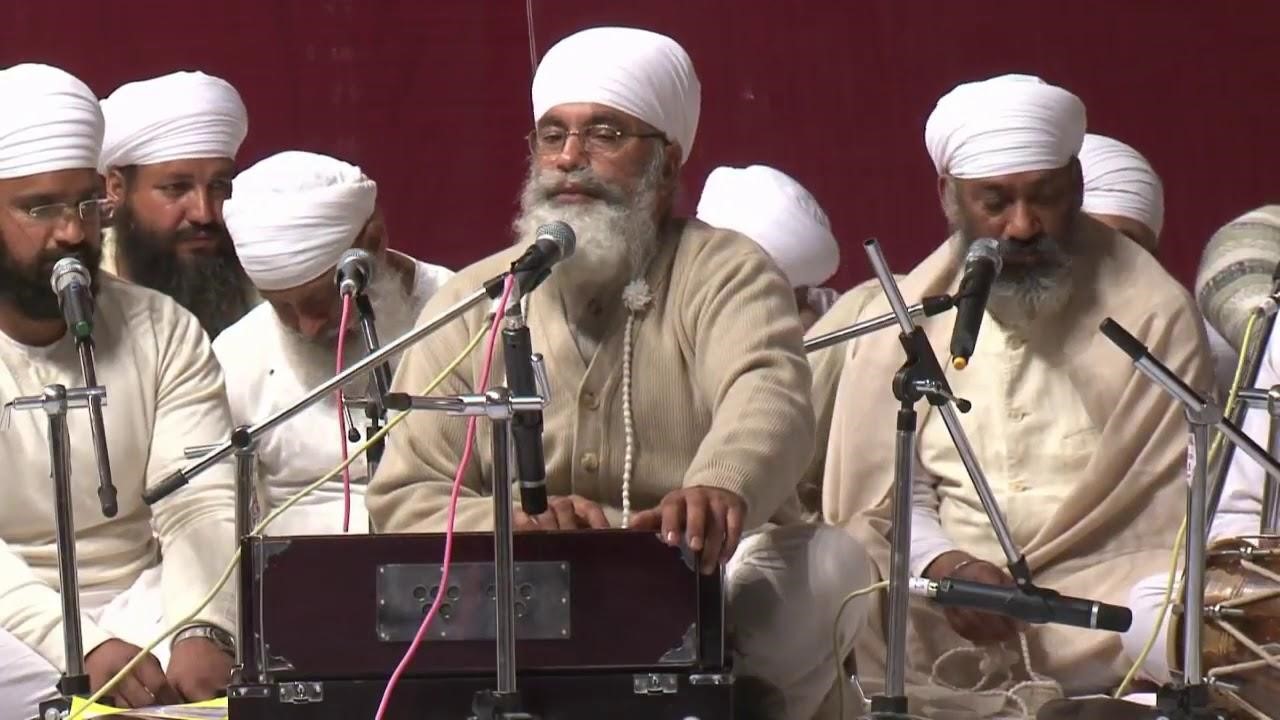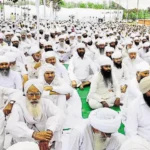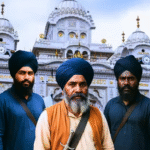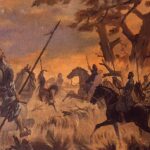Guru Nanak Ji is the founder of Sikhism, and he is followed by nine other living gurus. Guru Gobind Singh, the last living Guru, granted Guru Gaddi the Sikh sacred book “Granth Sahib ” in 1708, and it became Guru Granth Sahib. All Sikhs must follow Guru Granth Sahib as their living Guru, he said. Every mainstream Sikh now follows the orders of Guru Gobind Singh, the Last Master. To become a Sikh, one must believe in one God and follow the teachings of the Ten Gurus, as well as the Guru Granth Sahib Ji. The real distinction between Namdhari Sikhs and mainstream Sikhs is. Namdhari disobeyed the 10th Guru’s command to treat Guru Granth Sahib Ji as their living Guru.
Guru Gobind Singh is said to have given Guru Gaddi to another living person, Baba Balak Singh, according to Namdhari Sikhs. The Namdhari Sikhs (also known as Kuka) have joined the Indian Freedom Fight under Baba Ram Singh’s leadership (another Namdhari Guru). Baba Duleep Singh is the current Guru of the Namdhari Sikhs.
Namdhari Sikh beliefs and History
History
Namdhari, also known as Kuka, is an austere sect of Sikhism, an Indian religion. Balak Singh (1797–1862) started the Namdhari movement, which did not believe in any religious rituals other than repeating God’s name (or name, for which reason members of the sect are called Namdharis). Ram Singh (1816–85), his successor, adopted the sect’s distinctive manner of wearing the turban (bent straight across the forehead instead of at an angle), of dressing entirely in white handwoven cloth, and of frantic hymn chanting culminating in shrieks (kuks; hence the name Kuka).
The Namdharis desired a rebirth of Sikh dominance in Punjab under Ram Singh’s leadership. About 65 Namdharis were captured and executed by cannon in January 1872 by British authorities. Ram Singh was deported to the Burmese city of Rangoon (now Yangon, Myan.).
The Adi Granth (“First Volume”), the divine holy book of Sikhism, and the Dasam Granth (“Tenth Book”), a work compiled by the followers of the 10th Guru, Gobind Singh, are held in equal regard by Namdharis, who differ from the mainline Sikh community in their equal regard for the Adi Granth (“First Volume”), the holy book of Sikhism, and the Dasam Granth (“Tenth Book”), a work assembled by the They’re also distinct in that they believe the live Gurus’ lineage continued after Gobind Singh. Namdharis have their gurdwaras (places of worship) and follow a strict vegetarian diet.
Beliefs of Namdhari Sikhs
Other Sikhs think that spiritual leadership was passed from the human Guru to the Sikh holy book, Sri Guru Granth Sahib, in 1708. The Namdhari Sikhs believe that spiritual leadership was transferred from the human Guru to the Sikh holy book, Sri Guru Granth Sahib, in 1708. Nonetheless, the Gurus’ teachings, as contained in Guru Granth Sahib and the Dasam Granth, the text of the Tenth Guru, are important to the Namdhari Sikh faith.
They believe in the unity of creation and a human’s responsibility to other living things on the planet, including animals and plants. Animals, too, regard life as holy. As a result, they are very proud of their vegetarianism.
Nonsmokers and teetotallers are also considered part of their faith. They are very concerned about environmental issues and factory farming, and they primarily farm using natural and organic methods. Poor landless refugees forced from newly founded Pakistan were granted thousands of acres of land free by the then Guru Pratap Singh after the partition of India, and with their tireless work and care, that barren land has become quite fertile, allowing the community to develop.
Sikhs from Namdhari are pacifists. They do not believe in bringing firearms with them. They wear the five Ks, but the ‘kangha’ is adorned with a miniature ‘kirpan’ (sword) (comb).
After the British occupation of Punjab, Guru Ram Singh is claimed to have thrown his pistol into a river and said, as previously said, that the rosary will bring freedom and harmony. Satguru Jagjit Singh, the current Guru, traverses the world preaching the message of peace and prayer. He is an outspoken advocate for the destruction of weapons and is concerned about nuclear proliferation. He believes that the only way to achieve peace on Earth is to give up nuclear and other weapons, encourages and supports nonviolent dispute resolution, and emphemphasizesaxation and prayer as tools for conquering violence.
The more devoted people wear a 108-bead woolwoolendmade rosary around their neck. It is utilized by people during congregational meditation for silent meditation (naam simran). An hour of daily practice, as well as the recitation of the important daily prayers, that include the writings of the Tenth Guru, is recommended.
Namdhari Sikhs are encouraged to rise early in the morning, cleanse themselves, and shower before focusing on devotion through meditation and choral singing of morning hymns (asa de var), and also reading their daily prayers. On exceptional occasions, such as important family or community festivities, Namdhari Sikhs perform ‘havan,’ or the lighting of the sacred fire, to purify the elements.
The Namdhari Sikhs are known across the world for their strict adherence to the Indian classical musical tradition (Gurmat Sangeet). Singing and the playing of instruments such as the ‘dilruba, “santoor, “sarod,’ and ‘tabla’ truly preserve the significance of musical notation in which the Sikh Holy Book is recorded. This legacy is being preserved in the United Kingdom through particular instruction provided by masters of the craft.
Namdhari social institutions, which were founded in the mid-nineteenth century, were ahead of their time, particularly in terms of their deliberate challenge to conventional conventions. In his book A History of the Sikhs, Khushwant Singh, a well-known writ, er and author, claims that Guru Ram Singh provided ‘human’ (instructions) to his disciples that included ethical, social, hygienic, and political issues.
Their faith and trust in the physical human shape of their Spiritual Master – Satguru – is at the Centerra of their spiritual focus. Their professional and financial values are rooted in the pursuit of a decent and honorable living. Lies, dishonesty, and theft are forbidden. The Namdhari style of life is a basic way of living in which spiritual consciousness elevates one’s self.








